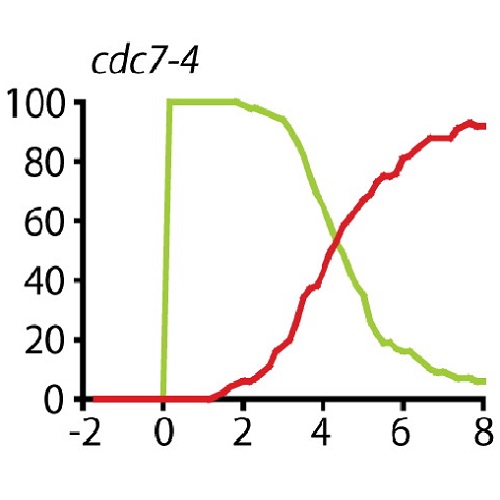Rec8 phosphorylation by casein kinase 1 and Cdc7-Dbf4 kinase regulates cohesin cleavage by separase during meiosis.
During meiosis, two rounds of chromosome segregation after a single round of DNA replication produce haploid gametes from diploid precursors. At meiosis I, maternal and paternal kinetochores are pulled toward opposite poles, and chiasmata holding bivalent chromosomes together are resolved by cleavage of cohesin's alpha-kleisin subunit (Rec8) along chromosome arms. This creates dyad chromosomes containing a pair of chromatids joined solely by cohesin at centromeres that had resisted cleavage. The discovery that centromeric Rec8 is protected from separase during meiosis I by shugoshin/MEI-S332 proteins that bind PP2A phosphatase suggests that phosphorylation either of separase or cohesin may be necessary for Rec8 cleavage. We show here that multiple phosphorylation sites within Rec8 as well as two different kinases, casein kinase 1delta/epsilon (CK1delta/epsilon) and Dbf4-dependent Cdc7 kinase (DDK), are required for Rec8 cleavage and meiosis I nuclear division. Rec8 with phosphomimetic mutations is no longer protected from separase at centromeres and is cleaved even when the two kinases are inhibited. Our data suggest that PP2A protects centromeric cohesion by opposing CK1delta/epsilon- and DDK-dependent phosphorylation of Rec8.

- Dev. Cell 2010 Mar 16;18(3):397-409
- 2010
- Cell Biology
- 20230747
- PubMed
Enabled by:
